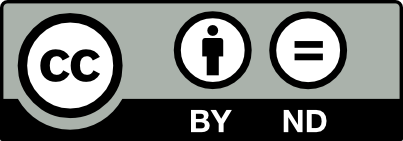

Creative Commons defines Open Educational Resources (OER) as teaching, learning, and research materials that reside in the public domain or have been released under an open license that permits their free use and re-purposing by others.
You can also identify whether a resource is an OER by asking yourself if it meets the "5R" rule.

The terms "open content" and "open educational resources" describe any copyrightable work (traditionally excluding software, which is described by other terms like "open source") that is either (1) in the public domain or (2) licensed in a manner that provides everyone with free and perpetual permission to engage in the 5R activities:
Defining the "Open" in Open Content and Open Educational Resources was written by David Wiley and published freely under a Creative Commons Attribution 4.0 license at http://opencontent.org/definition/.
For more definitions of OER, see the Creative Commons Wiki.
Textbooks have been prohibitively expensive for years now, and are becoming more expensive at three times the rate of inflation according to the US PIRG Education Fund.
A common question faculty face before deciding to adopt OER is whether free resources are really of high enough quality for their courses. "You get what you pay for" is a persistent myth but the reality is that open resources are often subject to the same degree of rigorous peer-review as commercially published texts and students tend to perform just as well, or sometimes better, in courses that use OER.
The public domain refers to all published material not protected by copyright law. This includes works published by the United States Federal Government, works with expired copyright protections, and works that are "born" in the public domain because they were published under licenses such as CC0.
 CC0 (aka CC Zero) is a public dedication tool, which allows creators to give up their copyright and put their works into the worldwide public domain. CC0 allows reusers to distribute, remix, adapt, and build upon the material in any medium or format, with no conditions.
CC0 (aka CC Zero) is a public dedication tool, which allows creators to give up their copyright and put their works into the worldwide public domain. CC0 allows reusers to distribute, remix, adapt, and build upon the material in any medium or format, with no conditions.
Open Educational Resources are typically published under a Creative Commons (CC) license specifying how the author will allow their material to be used. There are six different license types, listed from most to least permissive here:
CC BY: This license allows reusers to distribute, remix, adapt, and build upon the material in any medium or format, so long as attribution is given to the creator. The license allows for commercial use.
CC BY includes the following elements:
CC BY-SA: This license allows reusers to distribute, remix, adapt, and build upon the material in any medium or format, so long as attribution is given to the creator. The license allows for commercial use. If you remix, adapt, or build upon the material, you must license the modified material under identical terms.
CC BY-SA includes the following elements:
CC BY-NC: This license allows reusers to distribute, remix, adapt, and build upon the material in any medium or format for noncommercial purposes only, and only so long as attribution is given to the creator.
It includes the following elements:
 CC BY-NC-SA: This license allows reusers to distribute, remix, adapt, and build upon the material in any medium or format for noncommercial purposes only, and only so long as attribution is given to the creator. If you remix, adapt, or build upon the material, you must license the modified material under identical terms.
CC BY-NC-SA: This license allows reusers to distribute, remix, adapt, and build upon the material in any medium or format for noncommercial purposes only, and only so long as attribution is given to the creator. If you remix, adapt, or build upon the material, you must license the modified material under identical terms.
CC BY-NC-SA includes the following elements:
Not all works published under a CC license is an OER. Works released under the licenses below are not considered OER because they do not allow users to make changes to the licensed material. You can use material published under these licenses in your classroom, but you cannot make any changes to them.
 CC BY-ND: This license allows reusers to copy and distribute the material in any medium or format in unadapted form only, and only so long as attribution is given to the creator. The license allows for commercial use.
CC BY-ND: This license allows reusers to copy and distribute the material in any medium or format in unadapted form only, and only so long as attribution is given to the creator. The license allows for commercial use.
CC BY-ND includes the following elements:
CC BY-NC-ND: This license allows reusers to copy and distribute the material in any medium or format in unadapted form only, for noncommercial purposes only, and only so long as attribution is given to the creator.
CC BY-NC-ND includes the following elements: